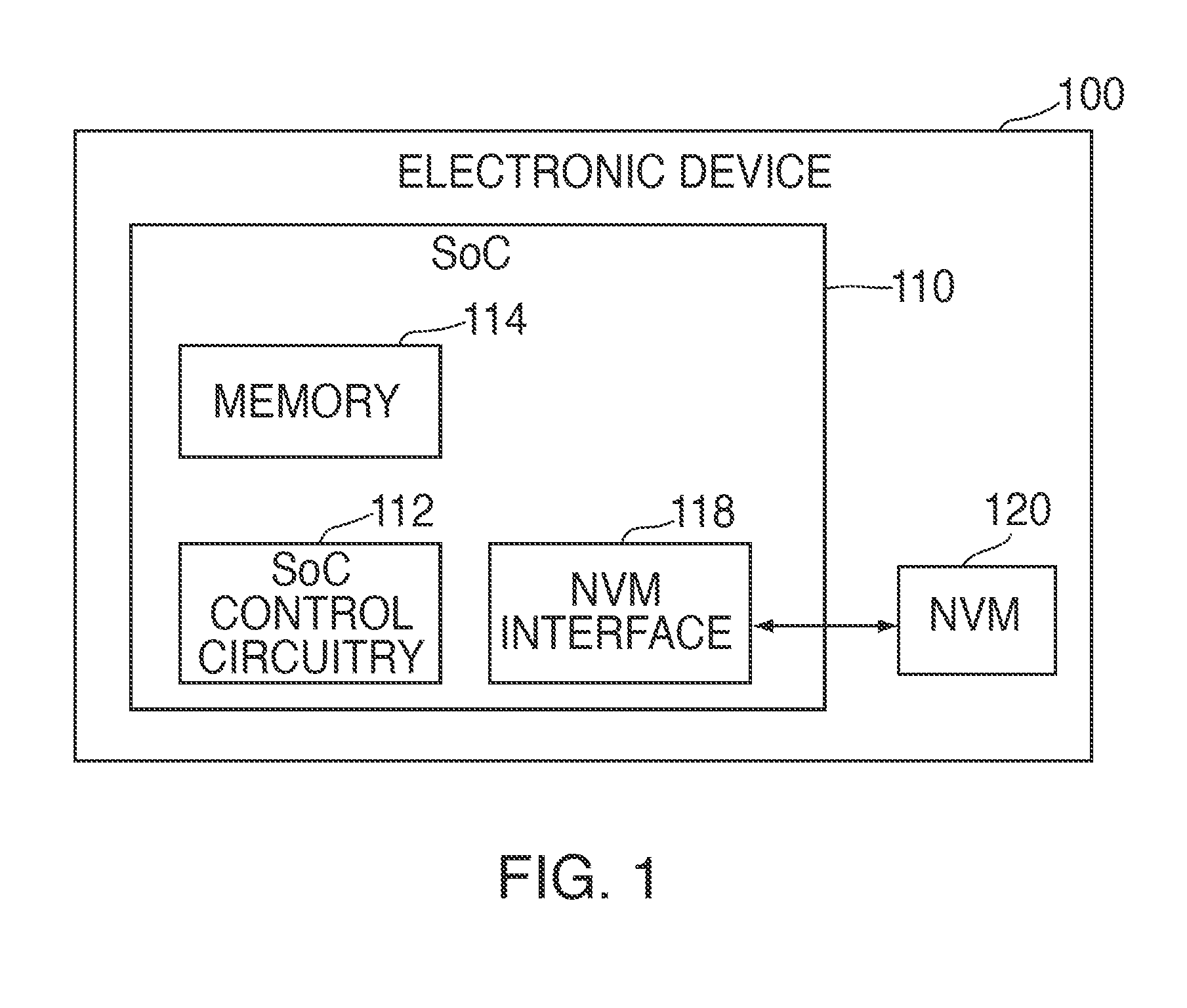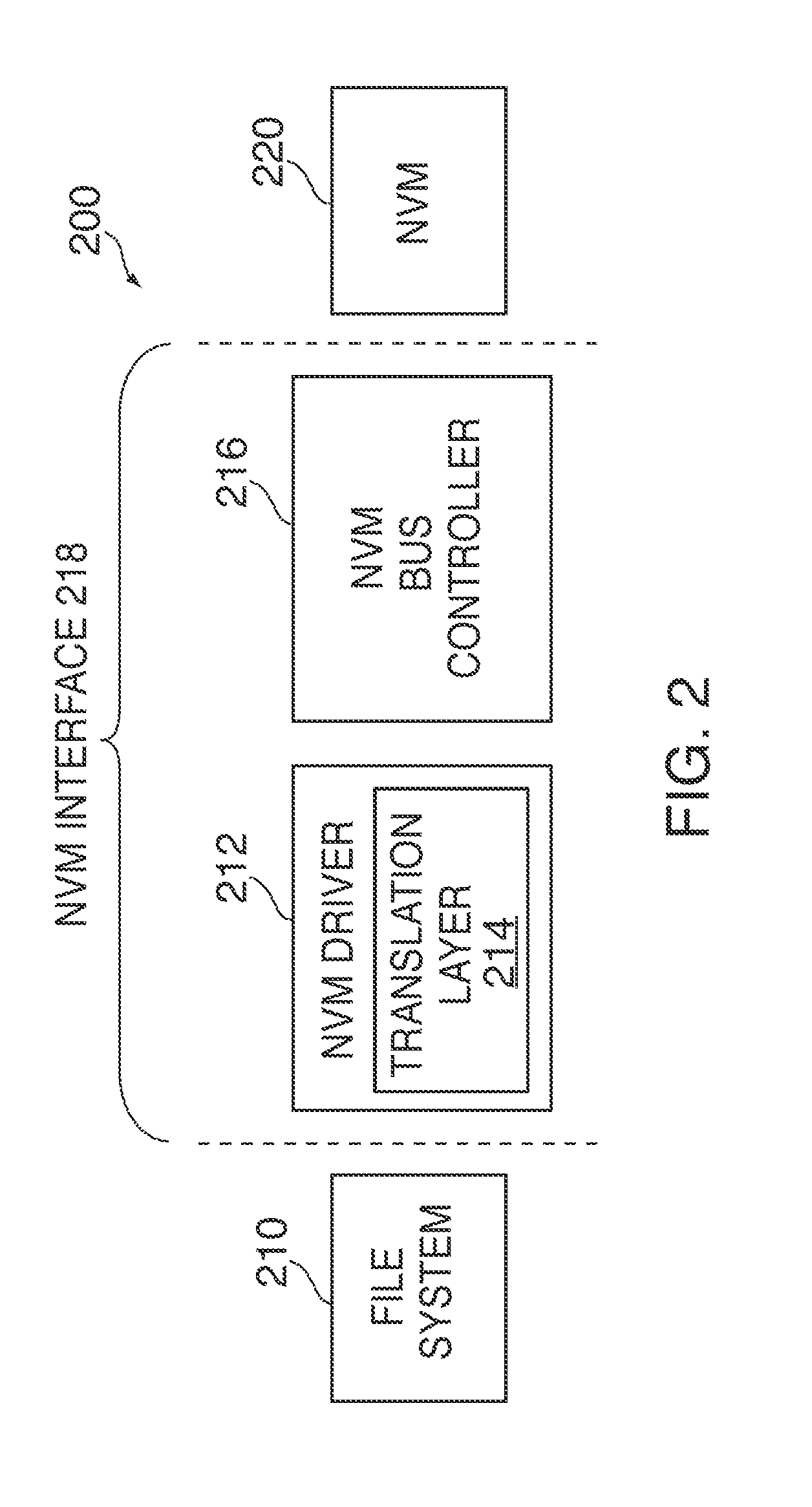Weave sequence counter for non-volatile memory systems
a non-volatile memory and sequence counter technology, applied in the direction of memory adressing/allocation/relocation, instruments, computing, etc., can solve the problems of limiting the ability of the nvm system to weave data and not being executabl
- Summary
- Abstract
- Description
- Claims
- Application Information
AI Technical Summary
Benefits of technology
Problems solved by technology
Method used
Image
Examples
Embodiment Construction
[0014]Systems and methods are disclosed for providing a weave sequence counter (“WSC”) for non-volatile memory (“NVM”) systems. The WSC can identify the sequence in which each page of the NVM is programmed. The “weave” aspect can refer to the fact that two or more blocks can be open for programming at the same time, thus allowing the pages of these blocks to be programmed in a “woven” manner.
[0015]In the event of an unclean shutdown or other system reboot event, the NVM system may need to rebuild one or more logical-to-physical mapping tables of the NVM. Moreover, this mapping table may include only valid (e.g., non-corrupted) data. During the rebuilding process, upon locating a corrupt page with invalid data, the NVM system may examine the WSC values in the pages of the blocks of the NVM to determine the particular WSC value of that corrupt page. The NVM system may then determine that any page having a WSC value greater than the WSC value of the corrupt page could not be adopted be...
PUM
 Login to View More
Login to View More Abstract
Description
Claims
Application Information
 Login to View More
Login to View More - R&D
- Intellectual Property
- Life Sciences
- Materials
- Tech Scout
- Unparalleled Data Quality
- Higher Quality Content
- 60% Fewer Hallucinations
Browse by: Latest US Patents, China's latest patents, Technical Efficacy Thesaurus, Application Domain, Technology Topic, Popular Technical Reports.
© 2025 PatSnap. All rights reserved.Legal|Privacy policy|Modern Slavery Act Transparency Statement|Sitemap|About US| Contact US: help@patsnap.com



